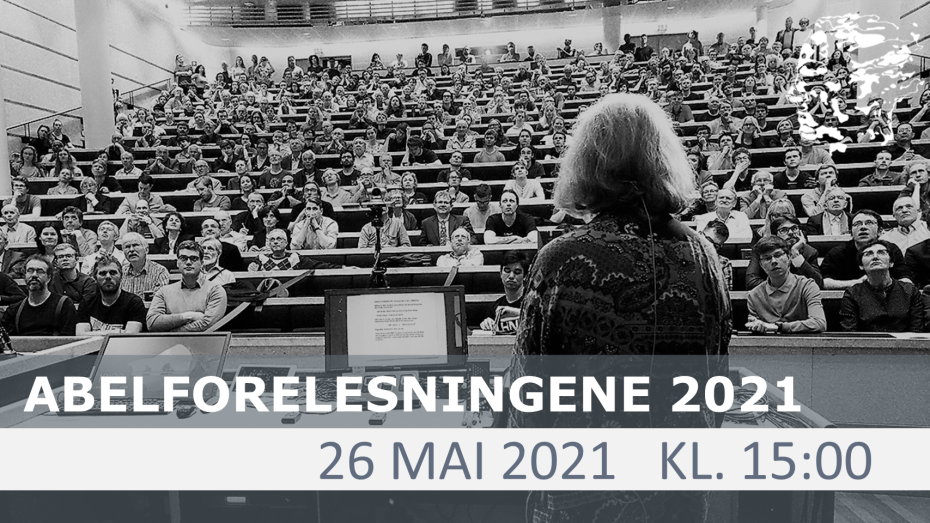
Abelforelesningene 2021
De tradisjonelle Abelforelesningene holdes i år digitalt. I tillegg til årets Abelprisvinnere László Lovász og Avi Wigderson, vil også fjorårets vinnerne, Hillel Furstenberg og Gregory Margulis holde sine Abelforelesninger.
Program
Kl. 15.00 - 17.00
- Hillel Furstenberg: Random walks in non-euclidean space and the Poisson boundary of a group
- Gregory Margulis: Arithmeticity of discrete subgroups and related topics
Kl. 18.00 - 20.00
- László Lovász: Continuous limits of finite structures
- Avi Wigderson: The Value of Errors in Proofs
Det blir satt av tid for spørsmål til prisvinnerne
Mer informasjon og påmelding
Du kan også se streamen på Abelprisens YouTube-kanal
Sammendrag
Hillel Furstenberg - Random walks in non-euclidean space and the Poisson boundary of a group
Sammendrag kommer
Gregory Margulis - Arithmeticity of discrete subgroups and related topics
In late 1950s, A.Selberg conjectured that, with few exceptions, all discrete co-compact (or, more generally with finite covolume) subgroups in semisimple Lie groups should be of arithmetic nature. He also obtained some partial results in this direction. I will start with a short description of this work by Selberg. The arithmeticity conjecture is related to the rigidity phenomenon in the theory of discrete subgroups of Lie groups.
Eventually the arithmeticity conjecture was proved in most cases using various approaches, most notably so called superrigidity theorem. The proof of the superrigidity theorem is bases on applications of methods from ergodic theory/probability.
László Lovász - Continuous limits of finite structures
The idea that a sequence of larger and larger finite structures tends to a limit has been around for quite a while, going back (at least) to John von Neumann's "continuous geometries".
After a brief survey of the history of such constructions, we turn to limits of graph sequences; this theory was worked out for dense graphs and bounded-degree graphs more than a decade ago. The "intermediate" cases (for example, the sequence of hypercubes, or incidence graphs of finite geometries) represent much more difficult problems, and only partial results can be reported. Perhaps surprisingly, the limit objects, whenever known, are best described as Markov chains on measurable spaces.
Why are we making such efforts to construct such limit objects? The talk will show a couple of examples of interesting graph-theoretic problems where graph limits are needed even for the precise statement of the problem, or as the starting point of the solution.
Avi Wigderson - The Value of Errors in Proofs
A few months ago, a group of theoretical computer scientists posted a paper on the Arxiv with the strange-looking title "MIP* = RE", surprising and impacting not only complexity theory but also some areas of math and physics. Specifically, it resolved, in the negative, the "Connes' embedding conjecture" in the area of von-Neumann algebras, and the "Tsirelson problem" in quantum information theory. It further connects Turing's seminal 1936 paper which defined algorithms to Einstein's 1935 paper with Podolsky and Rosen which challenged quantum mechanics.
As it happens, both acronyms MIP* and RE represent proof systems, of a very different nature. To explain them, we'll take a meandering journey through the classical and modern definitions of proof. I hope to explain how the methodology of computational complexity theory, especially modeling and classification (of both problems and proofs) by algorithmic efficiency, naturally leads to the genaration of new such notions and results (and more acronyms, like NP). A special focus will be on notions of proof which allow interaction, randomness, and errors, and their surprising power and magical properties.
The talk will be non-technical, and requires no special background.